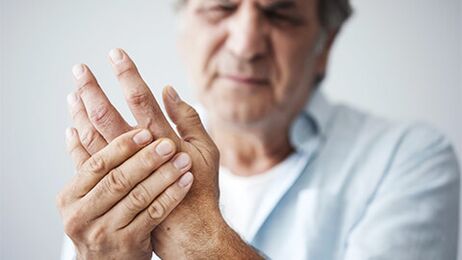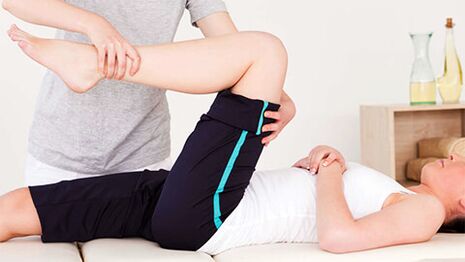
Arthrosis is the entire group of deep dystrophic diseases of the articular device with various etiologies, but the clinical picture of the same pathological change.Hyaline cartilage joints, then drunken bone tissue, joint capsules and ligaments, are exposed to destruction and deformation.The disease is progressive chronic and without proper treatment can significantly limit the motor activity of the patient.
Diagnosis and treatment of pathology are involved in arthologists, rheumatologists, surgeons, orthopedists.
General information
Arthrosis is diagnosed on about 1/5 of the planet population, but the disease is more characteristic of the elderly.This proves the statistics of its spread among different ages:
- Youth up to 40 years-not more than 6-7 %;
- Mature face after 45 years up to 20-25%;
- After 70 years - up to 80%.
The disease affects the tissues that are under constant load: small joints and feet, hips and knee joints, areas of the cervix and spinal thoracies, slightly less frequent ankles and shoulders.
Note! Joint loss between hands in women occurs 10 times more often than men.
In many western countries, the term "arthrosis" is not used, replacing it with the concept of "arthritis".Such replacements are quite appropriate, as the inflammation process in most cases precedes arthrosis or accompanying it.In domestic medicine, the terms "arthrosis" and "arthritis" basically mean the same disease, but with different etiology of the process.In addition, the concept of osteoarthritis, osteoarthrosis, osteoarthrosis deformation is used to prescribe pathology.
Note! The difference between arthritis and arthrosis lies in the cause of the disease.In the first case, this is the process of inflammation (suffix -this means inflammation), in the second disorder -Metabolic (protein, mineral).
The mechanism of development and cause of arthrosis
The main cause of arthrosis is a violation of equilibrium in the process of anabolism and catabolism of cartilage and bone tissue.If the synthesis process occurs normally, then during arthrose changes, the destruction process goes faster.As a result, rapid aging and deterioration of tissue structure are observed.They begin to collapse first at the cellular level, then in the tone of the organ.The first damaging change appears:
- cartilage cloud;
- Storageness is superficial;
- microcracks and tears;
- Deplicity of focus and general cartilage.
The cartilage loses natural elasticity and density and can no longer function as a shock absorber during movement.Letter -Coordinates together with the surface shape of the joints, which leads to the deformation of the connection.This exacerbates the development of pathological changes and triggered some irreversible processes.In exchange for lost cartilage, bone tissue begins to develop with the formation of spikes and growth, which is the movement of fetter and in turn can cause severe patients' defects.
The reason for this scenario:
- Violation of mineral metabolism can lead to gouty changes in the joints, osteoporosis, etc.
- Weaknesses of tissue nutrition are venous stagnation and poor micro -circulation slows down blood supply and lymphatic drainage.The composition of bone minerals is depleted, it becomes osteoporous and loses its own ability.This phenomenon is a characteristic of movement deficiency, with vascular pathology, hormone failure.
- Inflammatory process - due to acute infectious diseases, body hypothermia, affected hormone background.
- Autoimmune reactions are chronic focus of inflammation, nervous pressure, endocrine pathology and other causes can cause invasion of the body's immune system against its own cells, including articular tissue.The most common autoimmune lesions with rheumatoid arthritis, scleroderma, and red lupus.
- Improvement of joint wear - the inaccuracies between function and load is placed slows down the process of synthesis and accelerates destruction.This phenomenon is a feature of athletes, dancers, overweight people, and even for all those involved in heavy physical labor or associated with long static loads (standing work).
- Injuries - bruises, dislocations, fractures, penetrating wounds, tears - breaking the tissue structure and encouraging the onset of deformation.
- Genetically determined pathology - connective tissue displacement, collagen synthesis violation initially forms unstable, low functioning joints.
Some reasons are close to each other and form a complex pathological complex.
Attention! Hormone deviations play a very important role in violating bone tissue metabolism.Failure in the thyroid gland, menopause, taking contraceptives, corticosteroids - all of this is a direct way to osteoporous and arthrose changes within the frame.
Classification of change
In systematic arthrosis, some of the criteria are used: causes and etiology, localization, coverage area.
By etiology:
- Main arthrosis - develops freely, with damage to healthy joints, without previous pathological participation;
- Secondary-shaped to the background of the disease (gout, psoriasis, rheumatism), as well as in the presence of existing deformation or injury.
With the level of coverage:
- Local form-with damage to the number of limited joints: monoarthrosis-1 joints, oligoarthritis-2-3;
- The general form is a variety of polyarthrosis, when 3 large and more structured structures are involved in the pathological process.
According to the localization of the process, the names of the arthrosis of each joint separately are given:
- Coksartrosis - disables hip connections;
- Spondylarthrosis - affects the intervertebral disc, especially cervix, chest and lumbar;
- gonarthrosis - with the affected work of the knee joint;one of the most common species;
- Cruzartrosis - with involvement in the pathology of the ankle.
Arthrosis can be fast or slow progressive, compensation or decompensated.
The main symptoms and signs
Arthrosis is a complex disease.Conventionally, it can be divided into several pathologies that are united between them:
- Chondritis and chondrosis - inflammation and degenerative wounds of cartilage;
- Osteoporosis is also osteoporosis - a pathological process in bone structure;
- Synovitis - involvement of shell layer capsules together;
- Bursit - general inflammation of the bag;
- Reactive damage to soft tissue in adjacent areas - affects the muscles, ligaments, fibers.

Depending on the stage, degrees and shapes, they are observed simultaneously or selective.With this, the complex of symptom changes is formed.Between them:
- Pokhrutzhazing is a symptom of a violation of mineral metabolism and the first sign of the disease.It can happen at any age.
- Stock - intensively shown in the morning.It is short and can be expressed by the effects of jamming joints.
- Limiting mobility - reducing the amplitude of movement in acting or passive action.
- Pain-has different manifestations, starting from unpleasant and painful, which, after intense load, acquired a background character, and ends with acute sharp movements.So many "startup pain" is a feature, which is clear after a long and last period of time until the joints are fully developed.
- Swelling - with inflammation of the soft tissue, synovitis, bursitis.
- Deformation - observed with complete degeneration of cartilage and lack of shock factors.
Note! Bushara and Geberden nodules are signs of hand arthrosis.They are bone growth with osteophytes.
Level and level of arthrosis
In terms of the intensity of arthrose changes, 4 stages of the disease are distinguished:
- Stage 1 - with little re -flooding cartilage (structural violation and function in collagen fibers).In X -Ray, the picture is practically invisible.
- Level 2 - stinging cartilage in the joint lumen is up to 50%.It is covered with cracks, a slight pain in the damaged compound area.The osteophytic complex appears on X -ray;The joint gap slightly reduces its size.
- Level 3 - cartilage wounds almost reach the base of the bone, the joint gap is significantly reduced.
- 4 stages - completely damaged cartilage, leading to partial or complete degeneration of synovial fluid, abrasion of bone tissue and compound deformation.In some areas, sclerosis changes develop.Extreme manifestations of arthrosis are a combination of articular tissue with structural ossification and complete loss of mobility.
In some sources, stages 1 and 2 are combined into one.
With the progress of the symptoms, the motor activity of a person suffers.In view of the joint functional performance violations, 4 degrees of possible pathological development are distinguished:
- 0 degrees - mobility and performance are fully preserved;
- 1 degree - patients maintain the ability to obtain social and real activities, but cannot be involved in labor activities;
- 2 degrees - difficulty in the manifestation of social activity is added to the violation of labor activity;
- 3 degrees - all types of activities are limited or impossible: labor, social and self -service;Patients need persistent care.
What is a possible complication
By tightening with treatment, you can trigger some unpleasant consequences:
- Persistent pain syndrome;
- Disadvantages;
- vertebrates (with spondylarthrosis);
- deformation together;
- Immobility is complete with structural ossification.
What is the survey procedure including
For arthrosis diagnosis, medical examination with anamnesis collection is sufficient.To determine the degree of damage, instrumental examination is performed.The main way to get a clear picture of the disease:
- Radiography;
- CT, MRI;
- ultrasonography;
- scintigraphy;
- Diagnostic arthroscopy with cartilage and synovial fluid biopsy.
In the process of acute inflammation, doctors prescribe additional analysis: general blood tests, rheumen, biochemicals (glucose levels, protein compounds, electrolytes).
Treatment
It is not possible to completely eliminate the disease.Timely arthrosis treatment allows you to maintain the functionality of motor activity together, and prevent pain.To exclude complications, it should start in the first stage.
Drug therapy Includes:
- anti -inflammatory drugs, especially NSAIDs;
- intra steroid blocks -articular pain and inflammation (with synovitis, bursitis);
- Proteolysis inhibitors - slowing down and suspending the process of destruction of bone and cartilage;
- Antispasmodics - prevent muscle cramps;
- angioprotectors and drugs to improve blood circulation in the affected tissue;
- Chondroprotectors;
- synthetic replacement for synovial fluid;
- Vitamins and mineral composition.

The physiotherapy complex Set in parallel to increase the effects of the drug.Main physiotherapy:
- magnetotherapy;
- electrophoresis;
- Uhf;
- mud;
- bath;
- Massage;
- Exercise therapy and kinesiotherapy use special simulators.
Surgical - The only way to treat at the later stage, when cartilage tissue is completely destroyed.The following solutions for problems are possible:
- endoscopy - with partial or complete replacement along with artificial analogs;
- Arthroscopy - an invasive minimum operation to remove osteophytes or partial replacement of cartilage;
- Arthrodesis - closing the joints and sets them in the simplest position;The surface of the joints that connect without moving over time.
Prophesy
Arthrosis does not threaten the life of the patient, but the lack of treatment can limit the freedom of movement and aggravate the quality of life.Timely and competent therapy in the early stages can restore the joints to healthy conditions.In other cases, only moisture in the degeneration process is possible with the help of conservative treatment and compensation for the function of the prosthetic.
Prevention
Complete recovery is almost impossible, so prevention should be paid for special attention.The main requirements are a healthy lifestyle and the full treatment of the inflammatory process:
- Do not allow hypothermia and treat infectious diseases on time;
- Avoid long physical loads and static loads;
- maintaining normal weight;
- Adhering to the proper diet of vitamins and minerals is very important for the health of the musculoskeletal system;
- Completely (if possible, until complete recovery), treat any damage to the joints;
- Systematic physical training practices to stimulate blood circulation (bicycles, climbing, light jogging, scandinavian walking).
If you are at risk (old age, weak descent, physical burden) make sure you have a regular radiographic examination.






















